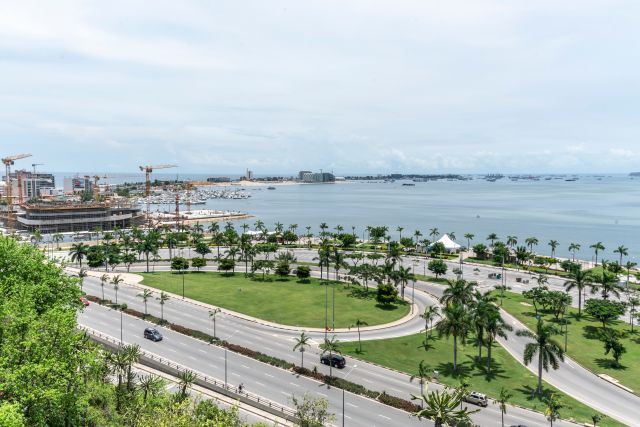
CMP in Focus – Building the Foundations for a Single African Electricity Market
From 30 June to 1 July 2025, the African Union Development Agency-NEPAD (AUDA-NEPAD) joined the African Union Commission (AUC) and key energy stakeholders at the AU Headquarters in Addis Ababa for the AfSEM–CMP High-Level Technical Meeting. The engagement brought renewed attention to the continent’s ongoing efforts to deliver accessible, affordable, and connected electricity across Africa.
From 30 June to 1 July 2025, the African Union Development Agency-NEPAD (AUDA-NEPAD) joined the African Union Commission (AUC) and key energy stakeholders at the AU Headquarters in Addis Ababa for the AfSEM–CMP High-Level Technical Meeting. The engagement brought renewed attention to the continent’s ongoing efforts to deliver accessible, affordable, and connected electricity across Africa.
Convened by the AUC, with strong technical contribution from AUDA-NEPAD, the meeting created space to reflect on the progress of the African Single Electricity Market (AfSEM), and Continental Power System Master Plan (CMP) the flagship Agenda 2063 initiatives designed to transform Africa’s energy landscape and unlock regional power trade.
A key milestone was the official launch of the AfSEM Technical Oversight Committee, a governance body tasked with steering and coordinating implementation across Member States and Regional Power Pools. The committee will play a central role in ensuring national and regional electricity markets are aligned, integrated, and equipped to deliver results.
AUDA-NEPAD, as the lead technical institution behind the CMP, presented its roadmap for power system planning and highlighted progress on identifying and prioritising cross-border electricity corridors. The CMP is designed to support regional connectivity, guide infrastructure investment, and promote shared access to sustainable energy.

When fully implemented, the CMP will help scale Africa’s power generation capacity to over 1,200 GW and increase intra-African power trade by 29 times, reaching USD 136 billion in value by 2040. These developments are expected to expand access and reduce energy costs across the continent.
The meeting featured opening remarks from Dr. Kamugisha Kazaura, Director for Infrastructure and Energy at the African Union Commission, who described the gathering as a defining moment for Africa’s continental energy market. “This is our opportunity to lay the institutional and operational groundwork for a connected African power market. It is not enough to have plans. We must now deliver on them in a coordinated, inclusive, and accountable way.”
Speaking at the meeting, Mr. Tichakunda Simbini, Principal Programme Officer for Energy at AUDA-NEPAD, reinforced the sense of momentum. “The ambitions of AfSEM and CMP are coming to life. With new regional energy projects being delivered including the commissioning of the Kenya–Tanzania Interconnector in December 2024, ongoing construction of the Zambia – Tanzania interconnector and power pools making steady progress, we are now convinced that this is something we can realise within our lifetime.” At this pace half of the AfSEM linking SAPP to EAPP will go live by 2028. In preparation EAPP, SAPP and AUDA-NEPAD are holding quarterly meetings to prepare for the anticipated integration of the two power pools.
Mr. Simbini highlighted, “No meaningful development can happen without investment in energy infrastructure. The CMP gives us the tools to plan smartly, act collectively, and bring power to more people, faster.”
At the heart of CMP lies a powerful truth, there can be no energy transition without transmission. The CMP places regional and cross-border interconnectors at the centre of Africa’s energy, ensuring that renewable power can flow efficiently across borders, from regions of surplus to those with demand.
While the baseline scenario would require $620 billion in additional investments to meet projected needs, the integrated approach not only reduces total system costs (from $0.084 to $0.078 per kilowatt-hour), but also offers far greater reliability, resilience, and long-term savings.
To meet Africa’s energy needs and integration goals, an estimated USD 1.3 trillion in investment is required by 2040. By 2040, the CMP envisions a fully connected African grid linking all five power pools (SAPP, WAPP, EAPP, CAPP, and COMELEC) and overcoming current gaps and the fragmentation of transmission networks.
Notable progress has been made on the CMP and AfSEM including the €17 million support secured from the European Union through its Continental Energy Programme for Africa (CEPA), supporting core implementation efforts. At the same time, regional masterplans across CAPP, EAPP, SAPP, and WAPP are being updated to align with AfSEM and Agenda 2063’s Second Ten-Year Plan.
Framework contracts are now in place to deliver 20 pre-feasibility studies and structure six priority projects. An Alliance of Philanthropic Organisations is being established with $2 million in support to help build a strong, bankable project pipeline.
Further support includes a Technical Assistance Pool set up with the Asian Infrastructure Investment Bank, and ongoing feasibility studies on regional energy trading and carbon markets in SAPP. The African Union is also working with the Africa Social Security Association to explore how pension funds can support infrastructure financing through pooled development funds.
Partners including the African Development Bank, European Union, GIZ, GET Invest, Get.Transform and the Africa EU Energy Partnership (AEEP), reaffirmed their support for the CMP and AfSEM agenda. Their continued collaboration remains vital in bridging Africa’s energy access and reliability gaps.
Africa’s Ten-Year Infrastructure Investment Plan
In the days following the Addis Ababa technical meeting, AUDA-NEPAD led the drafting of Africa’s Ten-Year Infrastructure Investment Plan (TYIIP), a strategic response to the G20’s request for a coordinated, long-term view of the continent’s energy priorities. Developed under the South African G20 Presidency, and coordinated by AUDA-NEPAD the plan is part of Africa’s broader effort to position itself in global energy governance defining clear priorities for access, interconnectivity, and climate-aligned infrastructure.
The TYIIP builds on and is expected to reinforce Africa’s existing frameworks including AfSEM, CMP, PIDA, and Mission 300 and aims to strengthen investment coordination, accelerate regional energy integration. It reflects AUDA-NEPAD’s role in translating continental policy into actionable infrastructure strategies and ensures Africa’s voice and vision are reflected in global energy transition dialogues.
For more information, please contact Bezayit Eyoel, Information Analyst, AUC, at bezayite@africanunion.org

